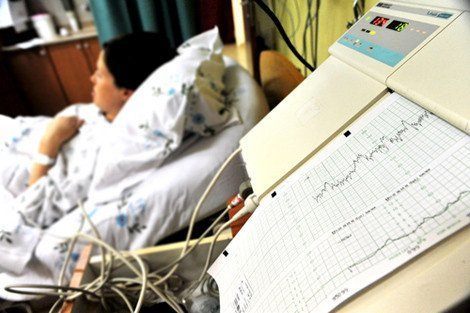For immediate release: March 19, 2013
Boston, MA – There is wide variation in the rate of cesarean sections performed at different hospitals across the U.S. and one explanation has been that hospitals with higher c-section rates serve greater numbers of women at high risk for the procedure. Now, a new study by researchers from Harvard School of Public Health (HSPH) and the Massachusetts Department of Public Health provides the strongest evidence to date that it’s not just medical need that determines who has c-sections, but also something at the hospital level—in other words, the same woman would have a different chance of undergoing a c-section based on the hospital she chooses.
The findings suggest that certain hospitals’ high rates of cesarean births have more to do with characteristics of the hospitals themselves than with characteristics of their patients.
“Even after taking into account factors that put women at risk of having a c-section, such as age, and pre-existing health conditions, some hospitals still have higher rates of c-section delivery than others,” said senior author S V Subramanian, professor of population health and geography at HSPH. Put simply, for two women with a similar observed risk profile, one might have a c-section delivery and one might not, depending on which hospital they go to, he said.
The study appears in the March 18, 2013 online issue of the journal PLOS ONE. The article is available at this link: http://dx.plos.org/10.1371/journal.pone.0057817.
While c-sections can be a lifesaving procedure for an infant in distress, or when there are multiple births or other labor complications, c-sections that are not medically necessary can put mothers and babies at avoidable risk of infection, extend hospital stays and recoveries, and increase health costs. In spite of these risks, c-section rates have been increasing in the U.S. over the past 17 years. Mirroring the national trend, cesarean deliveries in Massachusetts have increased steadily since 1997. In 2009, about one-third of all births in Massachusetts were by c-section—up 61% from 1998.
In 2008, the Massachusetts Department of Public Health invited local clinicians and researchers to partner with state health officials in a study to better understand why c-section rates have been rising in Massachusetts. The HSPH, Boston University, Massachusetts General Hospital, and Massachusetts Department of Public Health team, using data from the Pregnancy to Early Life Longitudinal data system, analyzed 228,864 births in Massachusetts’ 49 hospitals with maternity services from 2004-2006—98% of all births during that period.
The researchers found that about 27% of first-time mothers in Massachusetts having single, vertex (head-first) presentation, full-term infants from 2004-2006 had c-sections. C-section rates in Massachusetts hospitals varied from 14% to 38% even among this low-risk group.
Previous research had been unable to offer clear answers on whether variations in hospitals’ c-section rates had simply to do with hospitals’ different case mix. But the new research findings, say the authors, show with more certainty that a mother’s risk of c-section really is influenced by her choice of hospital. “This is the first time that anyone has shown this problem exists right here in Massachusetts, which is widely considered to be one of the world’s premier health care hubs,” said [[Mariana Arcaya]], research scientist at the Harvard Center for Population and Development Studies and co-author of the study.
The findings suggest that hospital practices and culture are important determinants of a hospital’s c-section rate, said lead author Isabel A. Cáceres, who was an epidemiologist at the Massachusetts Department of Public Health at the time of the study and is now at the Center for Health Information and Analysis, Commonwealth of Massachusetts. Though this study did not pinpoint which hospital factors were at play, the authors highlighted previous studies suggesting that liability and insurance, being a teaching hospital, hospital admission practices, and the presence of midwives may influence c-section rates. Lack of clinical guidelines or standards on when a cesarean should be performed also may help explain why hospital rates are so variable.
The researchers said that hospitals should re-examine their procedures for deciding when to perform c-sections to make sure that medical need—not other factors such as doctor preferences or fear of liability—determine how babies are delivered.
There was no direct funding for this study.
“Hospital differences in cesarean deliveries in Massachusetts (US) 2004-2006: the case against case-mix artifact,” Isabel A. Cáceres, Mariana Arcaya, Eugene Declercq, Candice M. Belanoff, Vanitha Janakiraman, Bruce Cohen, Jeffrey Ecker, Lauren A. Smith, S V Subramanian, PLOS ONE: March 18, 2013.
For more information:
Marge Dwyer
617.432.8416
mhdwyer@hsph.harvard.edu
Visit the HSPH website for the latest news, press releases and multimedia offerings.
###
Harvard School of Public Health (https://www.hsph.harvard.edu) is dedicated to advancing the public’s health through learning, discovery, and communication. More than 400 faculty members are engaged in teaching and training the 1,000-plus student body in a broad spectrum of disciplines crucial to the health and well being of individuals and populations around the world. Programs and projects range from the molecular biology of AIDS vaccines to the epidemiology of cancer; from risk analysis to violence prevention; from maternal and children’s health to quality of care measurement; from health care management to international health and human rights. For more information on the school visit: https://www.hsph.harvard.edu
HSPH on Twitter:http://twitter.com/HarvardHSPH
HSPH on Facebook: http://www.facebook.com/harvardpublichealth
HSPH on You Tube: https://www.youtube.com/user/HarvardPublicHealth
HSPH home page: https://www.hsph.harvard.edu
